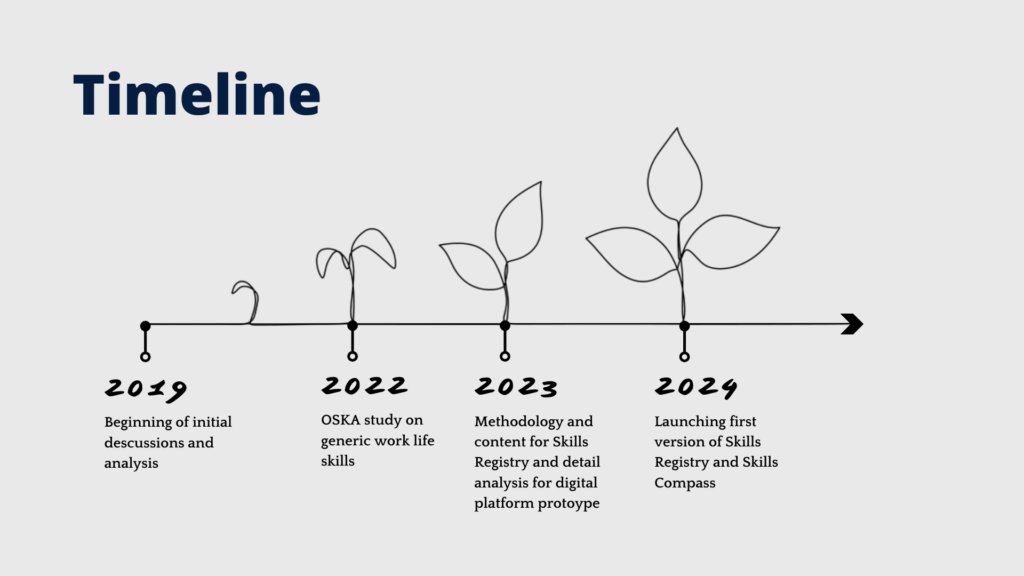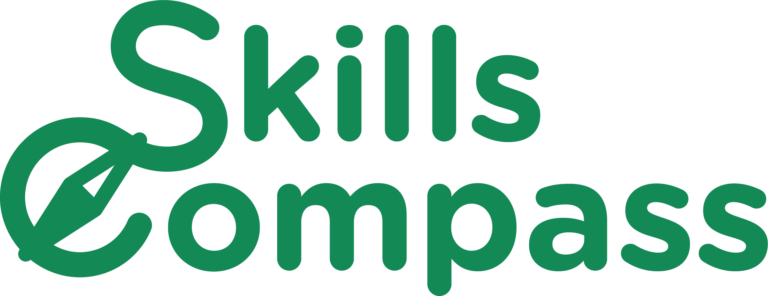The Skills Compass, the online tool of the skills system, was launched in September 2024. As of January 2025, it provides insights into 400 occupations, 2,800 skills, and 23 fields of work.
The Skills Compass is designed for all individuals shaping their professional future and their supporters (including parents).
- For learners entering the job market, the Skills Compass provides an overview of the diverse world of work and helps them identify attractive and suitable careers.
- Employers can use it to create clear and well-defined job descriptions and job advertisements.
- Job seekers (including career changers) can match their skills to job openings and receive training or retraining recommendations.
- Career specialists and advisors can use it as a career guidance tool.
- Educators and trainers can rely on it for designing curricula, describing learning outcomes, and supporting students’ career choices.
- Workforce and education policymakers can use the data for developing qualification standards, competency models, and labor market studies.
Key Features of the Skills Compass
Video clip from the discussion panel “Giant in PISA, Tiny in the Global Economy – Estonia’s Opportunities to Grow Bigger Through Skills” by Eliana Carranza during the Estonian Skills Conference “The Paradoxes of Lifelong Learning – Do More Skills Equal Better Results”. See the full discussion here: https://youtu.be/FCvKywlJQfw?si=3D-ACCPvKNNQx6od
Skills Section*
The Skills section contains the Estonian Skills Register, adapted to local labor market needs. The ultimate goal is to describe 8,000 skills by 2029 to ensure comprehensive coverage of all skills used in the job market.
*described in detail under the Skills Register
Occupations Section
The Occupations section features profiles of nearly 400 occupations in the Estonian labor market. The aim is to describe up to 1000 occupations by 2029.
Each occupation profile includes:
- A description (including tasks, work conditions, education requirements, career opportunities, necessary tools, and required knowledge).
- Labor market statistics (demand, number of workers, employment trends, wages).
- References (links to qualification standards, regulations, training opportunities, and studies).
- Skills (divided into essential and additional skills).
Each occupation is linked to EMTAK (The Classification of Economic Activities in Estonia) and ISCO classification (International Standard Classification of Occupations).
Fields of Work Section
The Fields of Work section describes 23 sectors, specifically categorized for the Skills Compass but closely aligned with EMTAK (The Classification of Economic Activities in Estonia) and OSKA studies (forecasts the need for Estonian labour force and skills). This section provides a brief overview of the fields of work and the specific characteristics of the occupations within it. It also brings together all related occupations, allowing direct access to detailed descriptions of each one.
My Compass Section
This section collects all skills assessed by the user, creating a personal skills profile. Based on the skills already selected, the user is also offered additional skill suggestions that might be of interest. The user can download their skills profile as a PDF and attach it to their CV.
Job Matching Tool
The Job Matching Tool is a playful career planning tool built into the Skills Compass platform.
- Users evaluate a minimum of 30 skills.
- They answer five multiple-choice questions regarding education, willingness to upskill, and work preferences.
- Based on responses, the tool suggests suitable occupations.
The Skills Compass is expected to evolve into a dynamic tool that supports the skills-related needs of various user groups — including individuals planning their learning and career paths, career counsellors, employers and recruiters, policymakers in the fields of education and employment, analysts, and educational institutions. It will enable them to effectively link skills and occupations with learning and development opportunities, as well as forecasts related to skills and occupations.

